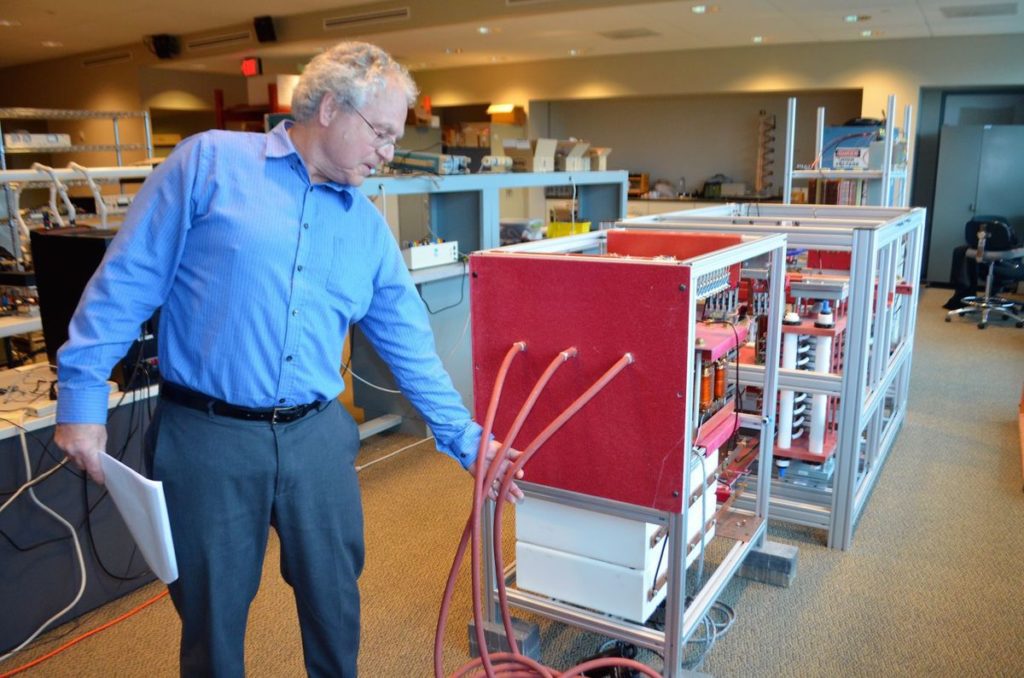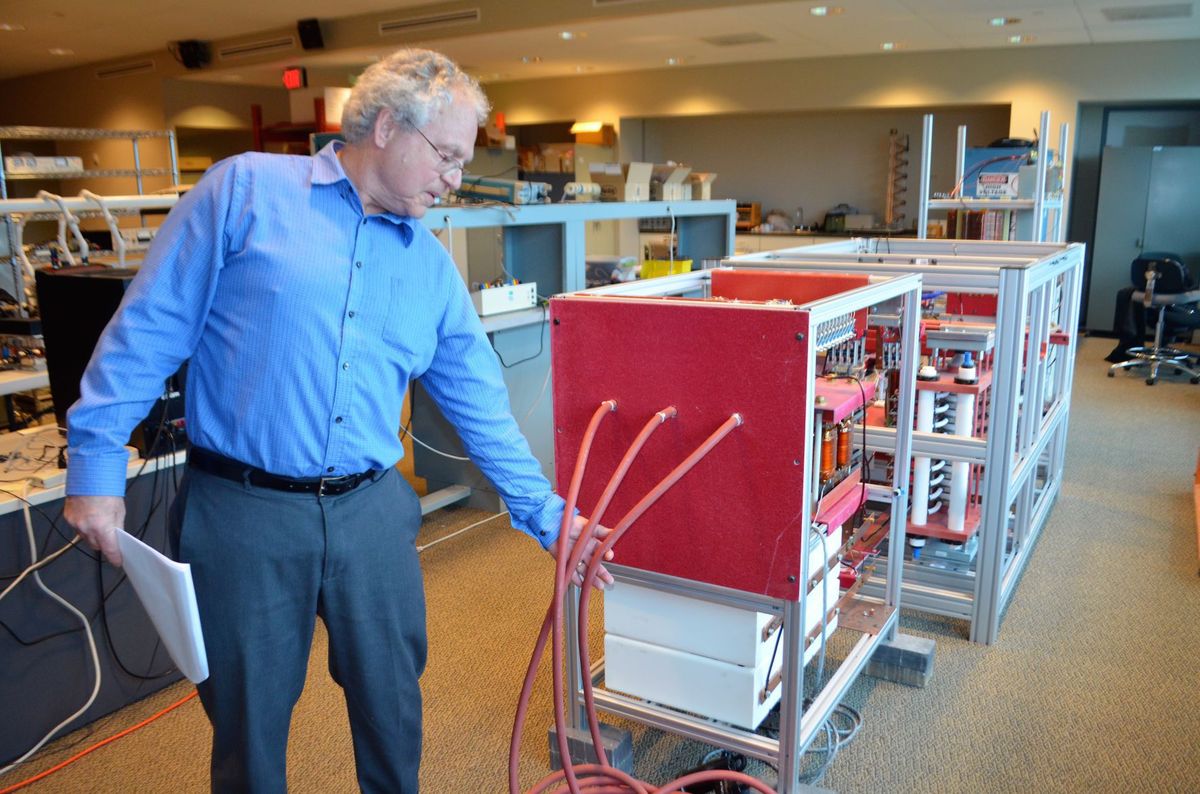by John Dahlia, EDITOR:: Apr 19, 2017
The proverb “necessity is the mother of invention” has a more modern connection to High Tech Foundation Distinguished Scientist Thomas Owens in Fairmont. The constant threat of domestic terrorism was the primary motivation behind the Solid-State Transformer technology Owens and his team have developed.
“There was an incident in California a few years back,” Owens explained while sitting in his lab. “A group of bad guys attacked a transformer yard and took out a bunch of big transformers just by shooting bullets into them.”
The event Owens referenced took place in April 2013 when a group staged a military-style attack on the Pacific Gas and Electric Co.’s Metcalf Transmission Substation in a rural part of California. Armed with semi-automatic weapons, the group knocked out 17 giant electrical transformers by shooting bullets at them, forcing tens of thousands of gallons of oil coolant to leak out.
“So it’s science 101,” Owens said. “When you remove the oil, the transformers burn up.”
The attack resulted in more than $15 million in damage and caused widespread power interruptions across parts of California, including Silicon Valley.
After the attack, utility companies nationwide began searching for ways to protect their vulnerable power grids from what Owens called the “cascading affect.”
“Cascading failures can happen when one part of the system fails,” he said. “If you take out enough power then it can overload the remaining stations, causing them to fail and creating a cycle where an entire grid or region could be left without power.”
The problem, according to Owens, is the transformer itself. The large electrical devices are critical when it comes to power distribution to residents in every corner of the nation and world. But they are extremely heavy and vulnerable to attack or even vandalism. One of the first ideas Owens and his team came up with when they began to build the Solid-State Transformer prototype was to make it as compact and lightweight as possible.
“It’s roughly about one-fifth of the weight of an equivalent steel core transformer,” he said. “It’s also modular so it can be transported in sections or pieces if needed.”
In this case, Owens and the team felt size and mobility mattered. The Solid-State Transformer device is much smaller and more mobile than the larger, traditional transformer, making replacement faster and less expensive, especially if the SST is used as a result of floods, earthquakes, hurricanes, tornadoes, wildfires, malicious activities or other unforeseen catastrophes.
“The idea would be to have a handful of these compact transformers stockpiled in a few central locations around the nation,” he said. “So, if an emergency were to come up, you could airlift them quickly.”
SSTs can be rapidly deployed using helicopters that can easily reach remote substations and substation sites that have been rendered inaccessible due to road or surface damage.
“The SST really has a fighting chance for rapid transport,” Owens added. “If the roads are impassable, this smaller device could be brought in by truck in pieces or airlifted by helicopter.”
But the SST is much more than just a transformer replacement. As it turns out, according to Owens, the innovation does something no other transformer can do: It regulates voltage.
“Meaning it will hold the voltage constant no matter what the demand,” he said. “It’s a smart device.”
Why is voltage regulation so important? In simple terms, if customers are drawing a lot of power at the same time, the voltage from a common transformer will dip, causing what is commonly known as a “brown out.”
“But this thing can hold the voltage constant,” he said. “It can actually regulate the voltage so, if there is greater demand, it will raise the voltage.”
The SST can also protect itself.
“It has a mechanism within it to cut the power off internally in a matter of micro-seconds,” he said.
But possibly one of its most revolutionary attributes is how it uses water instead of the more commonly used transformer oil or insulating oil as a coolant.
“That’s a big advantage because in a city or in a building you’d like to avoid using oil, especially in a confined place or where there might be people,” Owens said.
Despite its potential, the SST prototype remains locked away in a giant lab inside the Robert H. Mollohan Research Facility with no potential customers lined up. But Owens remains cautiously optimistic for the future, despite a lack of government or private sector interest thus far.
“It’s painful,” he said. “You know it’s something that is very useful and important and the world needs.”
Article originally posted by The Fairmont post, April 19, 2017, written by Editor John Dahlia



